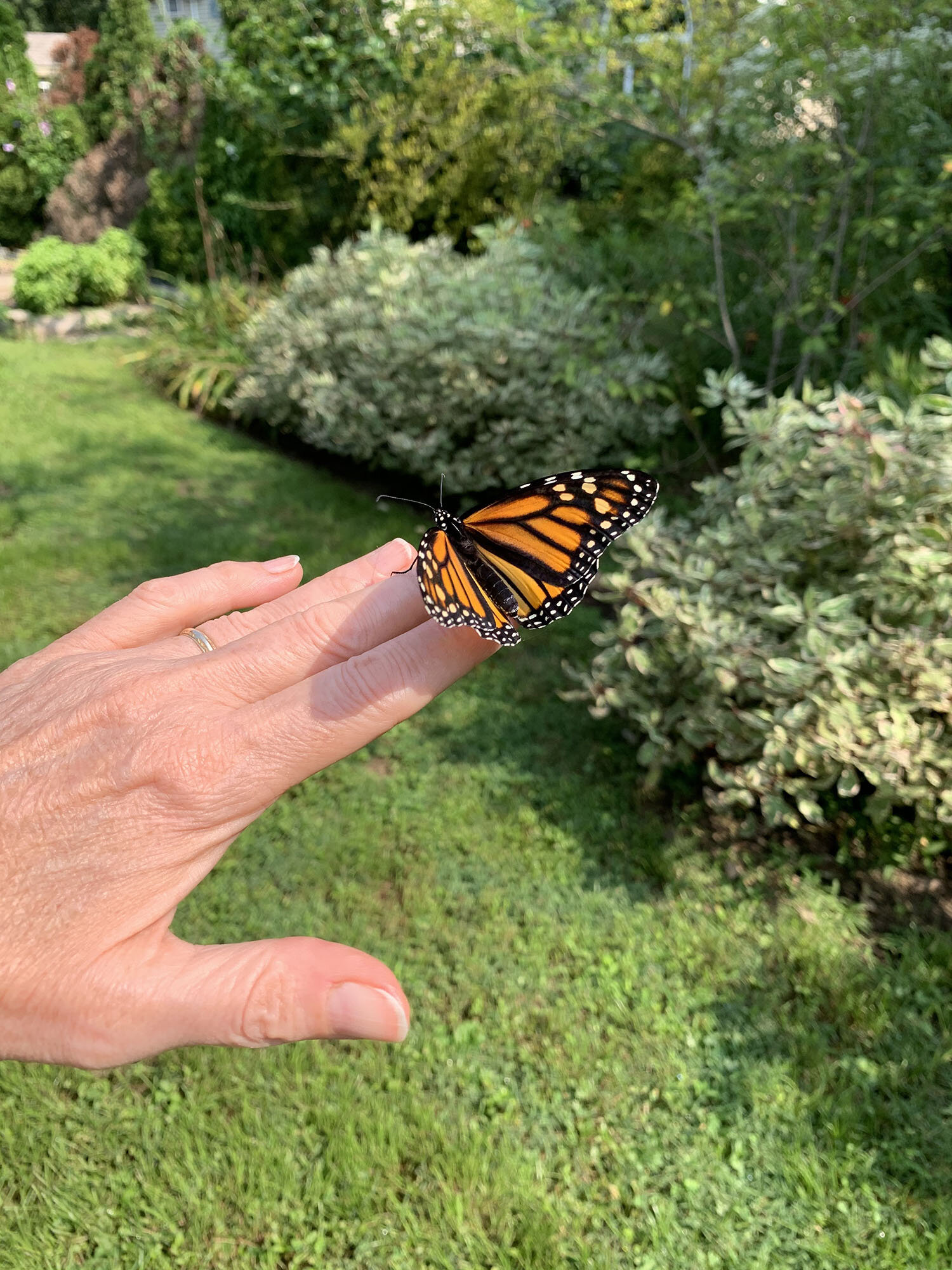A Butterfly Summer
Three caterpillars getting fat on swamp milkweed. Photo: Deb Bergstrand
Being home every day during this COVID-19 summer brought me a special opportunity: I started fostering monarch butterflies. First, one friend, Colin Purrington, inspired me to plant milkweed. Then another, Emily Hauze, urged me to bring these miracles of nature fully into my life. I now have three nursery boxes on our screened porch.
Finding a monarch egg on a milkweed leaf, cutting fresh leaves every morning for a very hungry caterpillar, watching it pupate into a pristine jade chrysalis, seeing the adult emerge, and finally having it perch on my hand so I can release it in the garden – each experience has deepened my connection with nature.
Getting ready to pupate. Photo: Deb Bergstrand
Monarch eggs are translucent pale-yellow ovals, with vertical ridges coming to a rounded point. I have swamp milkweed in my garden, which has large leaves. Gently bending the tall stalks over makes it easy to inspect the undersides for eggs. The newly hatched “cats” are incredibly tiny — just a few millimeters long — with ridged bodies and black heads. They are too small to chew all the way through a leaf, so they don’t make holes; they just eat a layer or two of the leaf’s surface.
As they get larger, the characteristic yellow, black, and white stripes appear. And they sure can eat! Children’s book author Eric Carle was spot on: these are very hungry caterpillars. They are eating and pooping machines. Fortunately, their excrement (called frass) is dry, odorless, and easy to clean up.
I house “my” monarchs on our screened porch, in a homemade box with screening on three sides, using florist vials or small, narrow-necked vases for the milkweed leaves. When the caterpillars are roughly two inches long (about 10 to 12 days after hatching), they crawl to the ceiling of the box to pupate.
In a time of pandemic, profound racial injustice, and political turmoil, I treasure the moments each day when I can lose myself watching caterpillars munching or waiting for a darkened chrysalis to open. I know I am privileged to have this time. I hope I’m helping a few more monarchs survive by protecting the eggs, cats, and pupa from predators and thunderstorms, but I know that I’m also doing this for myself.
As I write, eight jade chrysalises hang from the ceiling of the box. One caterpillar hangs in the classic “J” shape, waiting to shed its skin one last time and become a chrysalis. And one beautiful adult butterfly, who emerged just 40 minutes ago, waits with her wings unfurled to become strong enough to fly free. When she starts to flit around the enclosure, I’ll put my hand in, she’ll gently climb on, and I’ll carry her out to fly in the sun.
Newly emerged monarch butterfly. Photo: Deb Bergstrand






